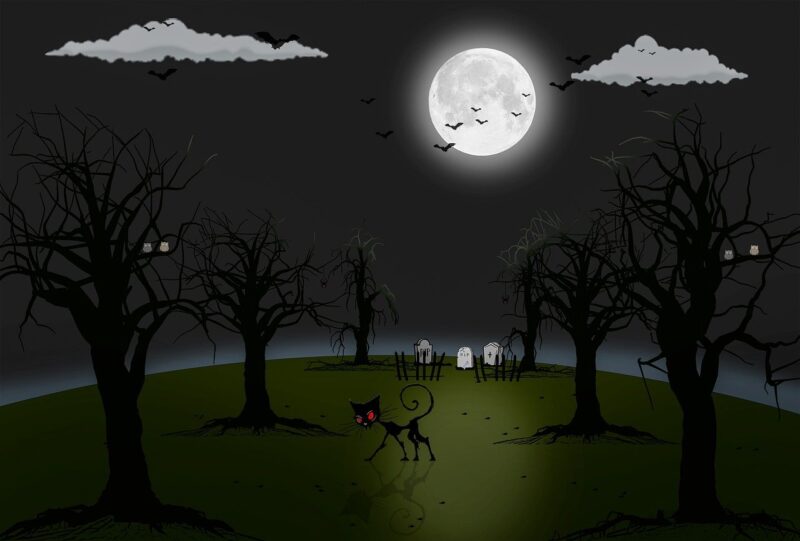The Creepiest Urban Legends That Inspired Popular Scary Movies
November 16, 2024

Urban legends have a unique ability to creep into our collective consciousness. These spine-chilling tales, often shared in whispers, transform over time, morphing into cautionary stories that can send shivers down anyone’s spine. Numerous popular scary movies take inspiration from these urban legends, breathing life into the fears and anxieties they encapsulate.
In this article, we’ll delve into some of the creepiest urban legends that have sparked Hollywood’s imagination, resulting in films that keep audiences up at night.
1. The Legend of the Hookman: The Origin of “I Know What You Did Last Summer”
The hookman urban legend has haunted teens since the 1950s. The tale typically involves a couple in their car who hear a radio bulletin about an escaped killer with a hook for a hand. As they panic and drive away, they later discover the killer has been lurking in the back seat or their home.
This terrifying narrative ultimately inspired the 1997 slasher film “I Know What You Did Last Summer.” The film showcases the psychological aftermath of a gruesome accident and the chilling suspense brought on by the unseen hookman.
The connection between urban legends and fears about the dangers of adolescence and responsibility resonates strongly in this gripping narrative which combines gore with emotionality.
2. The Vanishing Hitchhiker: Inspiration for “The Hitcher”
The vanishing hitchhiker is another classic urban legend that has found its way into cinema, particularly in the 1986 film, “The Hitcher.” This tale often depicts a driver who picks up a hitchhiker, only to discover that the passenger mysteriously vanishes or reveals ominous intentions.
In “The Hitcher,” the protagonist unwittingly picks up a malevolent hitchhiker who turns out to be a psychopathic killer. The tension builds as the protagonist becomes a target, placing them in a nightmare that plays off the fear of the unknown.
Knowing that someone could potentially be lurking in the shadows reinforces our trepidations about strangers and the dire consequences of our choices, making for a grippingly eerie film experience.
3. Bloody Mary: The Haunting of “Candyman”
The chilling story of Bloody Mary revolves around the myth of a woman who was wronged and now haunts anyone who speaks her name in front of a mirror. Traditionally, the legend concludes with a gruesome death for those daring enough to invoke her presence.
The 1992 film “Candyman” takes a deep dive into the themes of fear and folklore, centering on a supernatural killer summoned by repeating his name five times in front of a mirror.
The film isn’t just about urban legend horror; it also explores societal issues, making Blood Mary’s tale both a horror story and a reflection of communal fear. Her existence mirrors societal anxieties while harnessing the power of folklore in its storytelling.
4. The Chupacabra: The Fear Behind “Strangers”
Among Latin American urban legends, the Chupacabra is notable for its tales of a blood-sucking creature that preys on livestock. This legend emerged in the 1990s and quickly became a part of popular culture in Latin America and even gained recognition in the U.S.
The film “The Strangers” channels the fear of known dangers, drawing upon legends like the Chupacabra to illustrate human horrors; in the film, a couple faces unknown intruders in a secluded home. While not directly related, the fear of something lurking in the dark resonates with the creature’s mythology.
This connection between urban legends and our fears can serve as a stark reminder about the vulnerabilities inherent in isolation.
5. The Killer in the Backseat: Basis for “Urban Legend”
This urban legend tells of a woman driving alone who notices another vehicle following her. As she drives defensively, she suddenly realizes that the driver has been trying to save her life. A killer has indeed been lurking in her backseat, planning an attack.
The 1998 film “Urban Legend” cleverly intertwines this story among various chilling tales of youth culture nightmares. The movie serves as a modern horror anthology, showcasing college students falling prey to legends while commenting on how urban myths manifest in society.
Ultimately, this movie spotlights how urban legends can serve as reflections of real-world fears and moral lessons on the consequences of reckless behavior.
6. The Slender Man: A Modern Mythos & “Slender Man”
Emerging from internet folklore, Slender Man is a tall, thin figure often depicted with an unsettling blank face. This character has gradually morphed into a chilling urban legend, which inspired the 2018 film “Slender Man.”
Despite its creation being a product of online creepypasta—a digital form of folklore—the film addresses tensions around how mythological figures can impact real-life events, namely the tragic case that arose from a young girl’s delusion. The Slender Man phenomenon demonstrates how our fears can translate into popular culture, ultimately affecting individuals and communities.
In today’s digital age, the stories we tell intertwine with technology, instilling fear through screens rather than traditional oral storytelling.
Conclusion: The Enduring Power of Urban Legends in Horror Film
The significance of urban legends in shaping the narrative of horror films is undeniable. They tap into our primal fears and societal anxieties while furnishing filmmakers with timeless tales that can be retold and reinterpreted across generations.
Engaging with these stories allows us not only to relish the thrill of fear within a cinematic context but also to reflect on the underlying issues that inform our vulnerabilities. The cycle between urban legend and horror film is profound; merely watching these films can plunge us into deeper contemplation about the narratives we inherit and impart to one another.
So the next time you find yourself nestled in your favorite movie theater, remember—sometimes, these frightful tales have roots deep in our collective fears, shapeshifting through modern retellings that amplify their eerie resonance within our lives.







